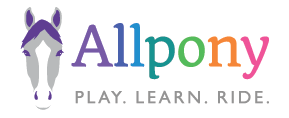This polo instructor interview is our fifth video in a series of educational videos intended to teach children about different horse sports.
For the video series, I ask each horse sport instructor the same seven or eight questions in an interview format and then do a little hands on learning as a way to help to expose a whole new generation of kids to different horse sports in short informational videos.
THE QUESTIONS I ASK EACH INSTRUCTOR:
- What is your experience with the sport?
- What level of experience do you recommend a kid have before they start learning your sport?
- What basic skills do you teach kids in the first few lessons?
- What do you wear to lessons?
- What type of tack and equipment do you need?
- What types of horses/ponies are good for the sport?
- What types of competitions are there in the sport?
- What do you wear in competitions?
We have filmed interviews with combined driving, hunter, show jumping (to come), eventing, polo, and equestrian vaulting instructors.
View this video and others on the Allpony YouTube channel or at the bottom of this page.

Hi, I’m Susan DiFelice from Allpony the horsemanship for kids website, and I’m here with David Brooks from Triangle Area Polo Club. We are talking about the horse sport polo today.
Can you tell me a little bit about your background with polo?
I started way, way back with a local group here that was that was based out of Rougemont, NC, and then went and played with another group in Pinehurst, and then actually got a job and went and played in Florida.

What types of horses and ponies are good for playing polo?
Well, it depends on the level. It’s like all sports. In horse sports, there’s all different levels. So here we use mostly quarter horses, because we know for our level, a quiet horse is most important. As you move up in levels, it becomes speed. When we go shopping for our prospects, we’re looking for a five year old that’s been in the program now for a couple years.
This is Trooper he’s one of our lesson horses. She’s really quiet and even. All of them are. She’s going in a just a little broken pelham bit, a very light bit. In the first lesson we actually teach you how to hold your reins, how to sit in the polo saddle, how to hold the mallet, how to strike the ball. Basically just the how to make a shot, and then we go over some of the basic rules.

What do you wear to polo lessons?
So when when a person shows up for their first lesson, all we require is boots and a helmet. When they become players, they wear tall boots to protect your legs and knee pads to protect your knees when you’re bumping together, an approved helmet, and either a face mask or goggles. Also a jersey and white pants that can be white jeans or white riding pants.

What types of tack and equipment do you need to play polo?
So the polo saddle is pretty specific to polo. You’ll actually see it has no blocks, so it’s really ultra close contact. And then the tack we use is a little heavier duty tack. You have to have a cavesson, a standing martingale, or we refer to it as a polo martingale, and a breastplate. You’re supposed to have two pairs of reins for safety. The polo martingale that’s attached here from the girth up to his cavesson on his nose, and a breastplate keep the saddle from sliding too far back. You need boots on the horse’s front legs and back wraps to protect the back legs.
You do their tail up to keep them from swinging their tail into a mallet, and also helps protect against other horses banging into them or inadvertently a mallet. Everything’s about safety, the martingales are to help keep our horse from getting their head too high and possibly getting it over the top of another horse. The second rein is just in case the first one breaks. You know, full size polo fields are 10 acres, so you wouldn’t want to be on 10 acres running wide open with a rein.

What experience should a kid have before they come to their first polo lesson?
Well, it depends a little bit on the age of the kid. But you know, it’s easier actually to teach kids that have no experience because polo is so different than anything else. We have kids and adults that have come from hunters, jumpers, eventing, and Western backgrounds. We can we can teach anyone. This is far different than anything else most people have done.

What basic skills do you teach in the first few lessons?
Our introduction lesson is actually an introduction slash assessment. Because we do have riders who come from other sports and they can actually pick things up a little quicker and get mixed into a group. Riders that are brand new to riding, we spend more time teaching them to ride.


